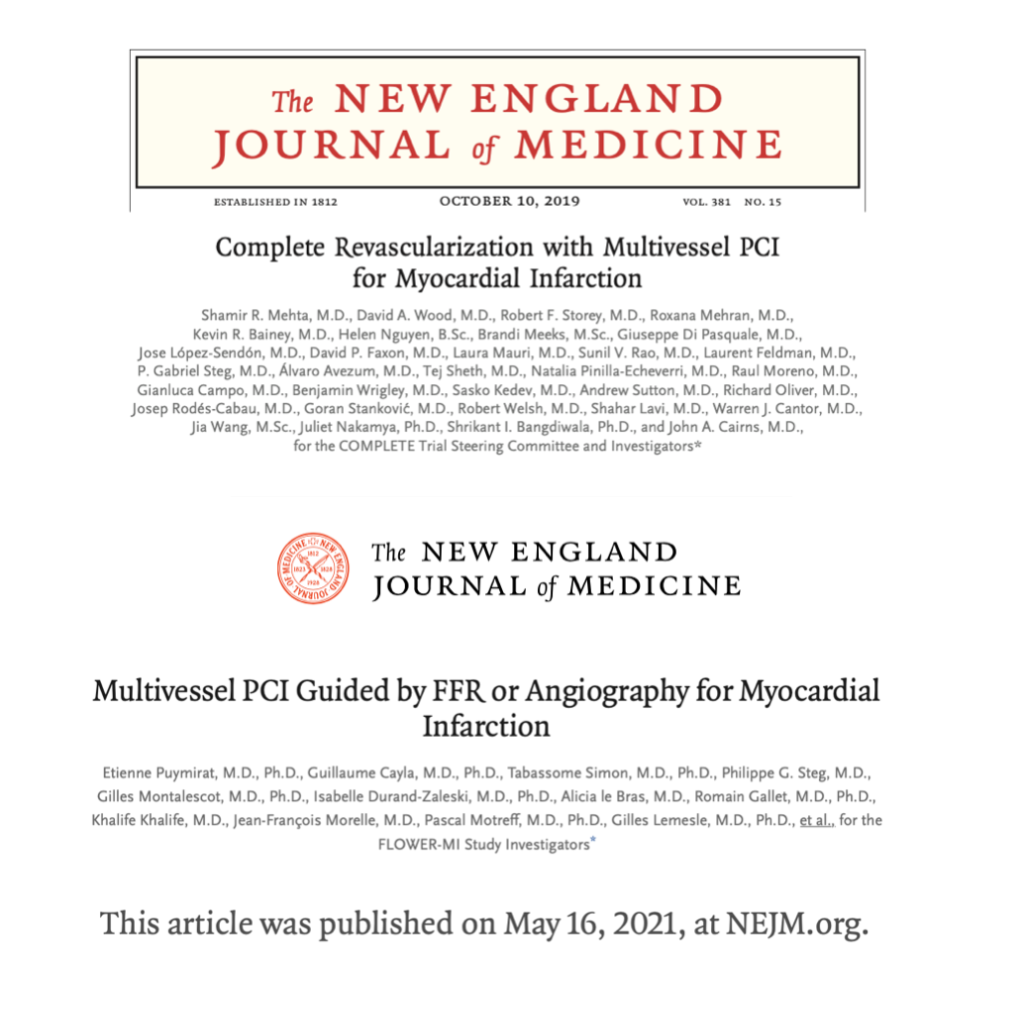Acute heart attack or ST-segment elevation myocardial infarction remains the biggest killer on the planet. More people succumb to an acute heart attack in a year than diabetes, hypertension, cancer, or lung disease. Importantly, Covid 19 is certainly not one of the biggest killers.
In the event of a heart attack one artery supplying the heart is completely blocked; that is 100% occluded. There are usually 3 coronary arteries supplying blood supply to the heart. The artery that gets totally blocked is termed the culprit artery.
The best treatment for an acute heart attack is to get to the closest hospital with a cath lab at the earliest. Time saved is heart muscle saved. The blocked artery needs treatment with coronary angioplasty and stenting to restore blood flow to the dying cells in the after heart.
In some patients another coronary artery may also be blocked, this is the non-culprit artery. It was believed earlier that the union culprit vessel is best left alone during the index procedure. But a large randomized trial, the COMPLETE trial, including more than 4000 patients with acute heart attack showed that opening up both the culprit artery and the non-culprit artery provided significantly better clinical outcomes than treating the culprit vessel alone. The composite of death and myocardial infarction was reduced from 10.5% to 7.8% in a follow-up of 3 years. The COMPLETE Trial was published in the New England Journal of Medicine in September 2019.
The decision to stent the non-culprit vessel was taken if it was blocked 70% or more, and if the blockage ranged between 50% to 69% stenting was done when the fractional flow reserve (FFR) was below 0.80. Usage of FFR in the cath lab confirms whether a 50% to 69% block is actually producing schema in the heart muscle being supplied by the non-culprit vessel.
This year another big randomized trial from France that included more than 1100 acute heart patients documented that using FFR for a non-culprit vessel having a 50% to 69% did not provide a clinical advantage over visual appearance during coronary angiography. The reason may be that in the setting of an acute heart attack FFR may be underestimating the physiological ramifications of a blocked artery.
Hence currently the take-home message should be that stenting of both the culprit vessel and the non-culprit vessel should be done either in the same hospital setting or within one and a half months of the heart attack if the non-culprit artery is 70% or more blocked regardless of ischemia.
But in case the non-culprit vessel has a block of 50% to 69% the patients should be assessed for ischemia by FFR after a month of the index procedure. In case there is a block in the non-culprit artery of less than 50%, treatment is medical management by pills.
Crucially the patient must get to the closest heart hospital as quickly as possible.
